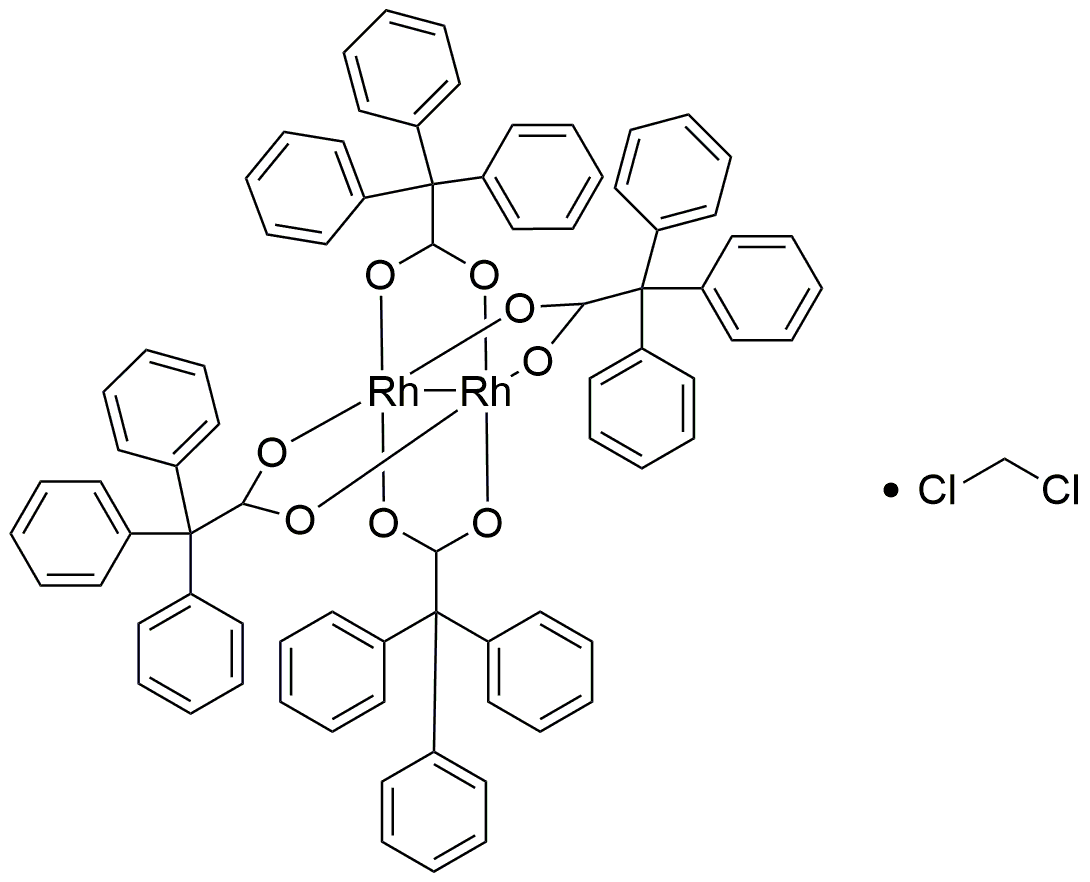Tetrakis(triphenylacetato)dirhodium(II) dichloromethane adduct is widely utilized in research focused on:
- Catalysis: This compound serves as an efficient catalyst in various organic reactions, particularly in asymmetric synthesis, helping researchers create specific chiral molecules with high selectivity.
- Organometallic Chemistry: It is a valuable reagent in organometallic chemistry, facilitating the study of metal-ligand interactions and the development of new metal complexes for diverse applications.
- Drug Development: The compound is explored in medicinal chemistry for its potential in developing new pharmaceuticals, especially in targeting specific biological pathways due to its unique coordination properties.
- Material Science: It is used in the synthesis of advanced materials, such as polymers and nanomaterials, where its properties can enhance the performance and functionality of the final products.
- Environmental Chemistry: Researchers investigate its applications in environmental remediation processes, utilizing its catalytic properties to break down pollutants and improve sustainability efforts.
General Information
Properties
Safety and Regulations
Applications
Tetrakis(triphenylacetato)dirhodium(II) dichloromethane adduct is widely utilized in research focused on:
- Catalysis: This compound serves as an efficient catalyst in various organic reactions, particularly in asymmetric synthesis, helping researchers create specific chiral molecules with high selectivity.
- Organometallic Chemistry: It is a valuable reagent in organometallic chemistry, facilitating the study of metal-ligand interactions and the development of new metal complexes for diverse applications.
- Drug Development: The compound is explored in medicinal chemistry for its potential in developing new pharmaceuticals, especially in targeting specific biological pathways due to its unique coordination properties.
- Material Science: It is used in the synthesis of advanced materials, such as polymers and nanomaterials, where its properties can enhance the performance and functionality of the final products.
- Environmental Chemistry: Researchers investigate its applications in environmental remediation processes, utilizing its catalytic properties to break down pollutants and improve sustainability efforts.
Documents
Safety Data Sheets (SDS)
The SDS provides comprehensive safety information on handling, storage, and disposal of the product.
Product Specification (PS)
The PS provides a comprehensive breakdown of the product’s properties, including chemical composition, physical state, purity, and storage requirements. It also details acceptable quality ranges and the product's intended applications.
Certificates of Analysis (COA)
Search for Certificates of Analysis (COA) by entering the products Lot Number. Lot and Batch Numbers can be found on a product’s label following the words ‘Lot’ or ‘Batch’.
*Catalog Number
*Lot Number
Certificates Of Origin (COO)
This COO confirms the country where the product was manufactured, and also details the materials and components used in it and whether it is derived from natural, synthetic, or other specific sources. This certificate may be required for customs, trade, and regulatory compliance.
*Catalog Number
*Lot Number
Safety Data Sheets (SDS)
The SDS provides comprehensive safety information on handling, storage, and disposal of the product.
DownloadProduct Specification (PS)
The PS provides a comprehensive breakdown of the product’s properties, including chemical composition, physical state, purity, and storage requirements. It also details acceptable quality ranges and the product's intended applications.
DownloadCertificates of Analysis (COA)
Search for Certificates of Analysis (COA) by entering the products Lot Number. Lot and Batch Numbers can be found on a product’s label following the words ‘Lot’ or ‘Batch’.
*Catalog Number
*Lot Number
Certificates Of Origin (COO)
This COO confirms the country where the product was manufactured, and also details the materials and components used in it and whether it is derived from natural, synthetic, or other specific sources. This certificate may be required for customs, trade, and regulatory compliance.


